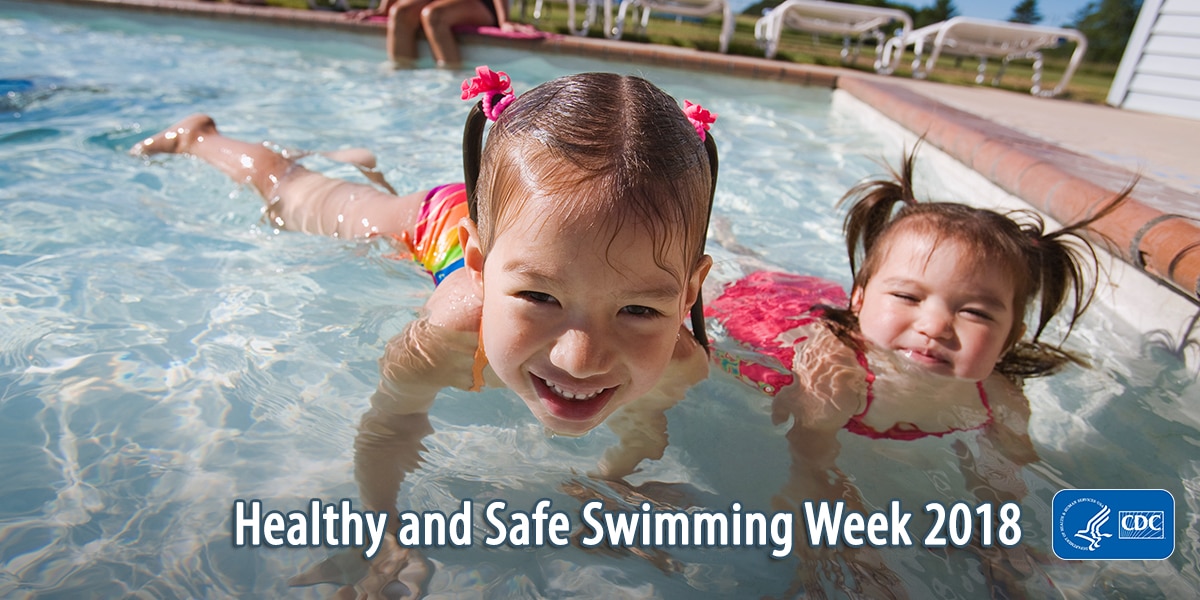
Did you know this is National Healthy Safe and Swimming Week? Whether you’re an avid swimmer or only deal with it on a vacation, it’s important to be reminded how to be safe while you’re in the water. Based on recommendations of the American Red Cross, consider these important swimming safety tips, which include direct and indirect hazards posed by swimming and related activities.
Preparing to swim
- Make sure everyone in your family learns to swim well. Enroll in age-appropriate swim courses.
- Have appropriate equipment, such as reaching or throwing aids, a cell phone, life jackets and a first aid kit.
- Enroll in home pool safety, water safety, first-aid and CPR/AED courses to learn how to prevent and respond to emergencies.
- Have young children or inexperienced swimmers wear U.S. Coast Guard-approved life jackets around and in water.
- If you have a home pool, secure it with appropriate barriers.
- Know how and when to call 9-1-1 or the local emergency number.
While in the water
- Choose to swim in levels of water consistent with your skill; being adventurous can be deadly.
- Until and unless you’re an expert swimmer, always swim with someone else.
- Choose to swim in areas supervised by lifeguards.
- Never leave a young child unattended near water. Develop the habit of having children ask permission to go near water.
- When you’re the one supervising your children, always be attentive; avoid distractions.
- If a child is missing, check the water first.
- Protect your skin while swimming. Limit the amount of direct sunlight you receive between 10:00 a.m. and 4:00 p.m. Wear sunscreen with a protection factor of at least 15.
- Drink plenty of water regularly, even if you’re not thirsty. Avoid drinks with alcohol or caffeine in them.
Water safety is just something that shouldn’t be taken for granted. Every second matters in preventing death and/or long-term disability. Many children who drown will only be out of sight for less than five minutes and in the care of one or both parents at the time. At the other end of risk, too often those believing themselves to be most skilled are most likely to place themselves in harm’s way with overly risky activities, leading to increased incidences of death (this is especially true for scuba divers). Take the time to protect yourselves and your loved ones.
Feel free to ask your SMA expert consultant any questions you may have on this topic.
Take the #72HoursChallenge, and join the community. As a thank you for being a valued subscriber to Straight, No Chaser, we’d like to offer you a complimentary 30-day membership at www.72hourslife.com. Just use the code #NoChaser, and yes, it’s ok if you share!
Order your copy of Dr. Sterling’s new books There are 72 Hours in a Day: Using Efficiency to Better Enjoy Every Part of Your Life and The 72 Hours in a Day Workbook: The Journey to The 72 Hours Life in 72 Days at Amazon or at www.72hourslife.com. Receive introductory pricing with orders!
Thanks for liking and following Straight, No Chaser! This public service provides a sample of what http://www.SterlingMedicalAdvice.com (SMA) and 844-SMA-TALK offers. Please share our page with your friends on WordPress, like us on Facebook @ SterlingMedicalAdvice.com and follow us on Twitter at @asksterlingmd.
Copyright © 2018 · Sterling Initiatives, LLC · Powered by WordPress









